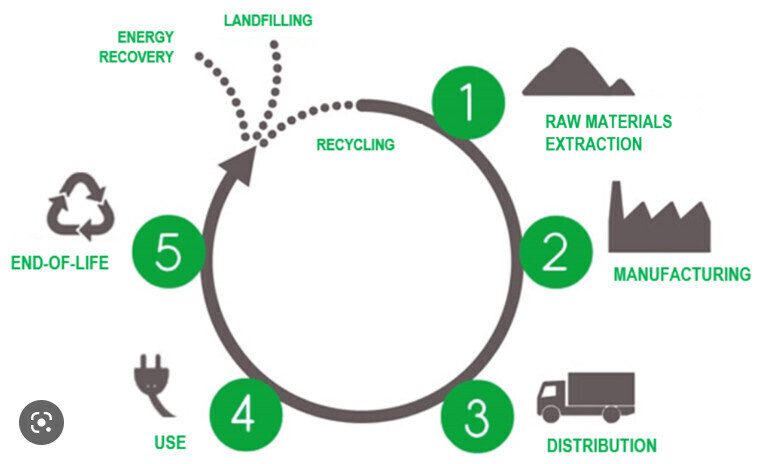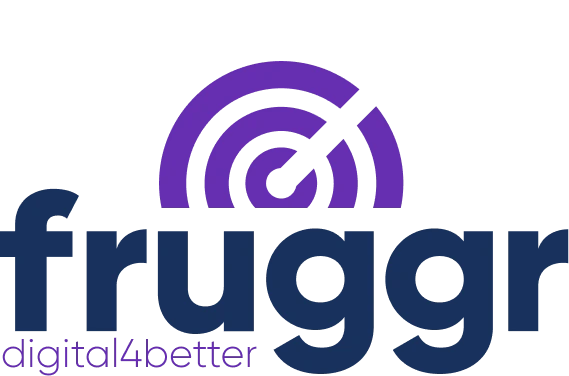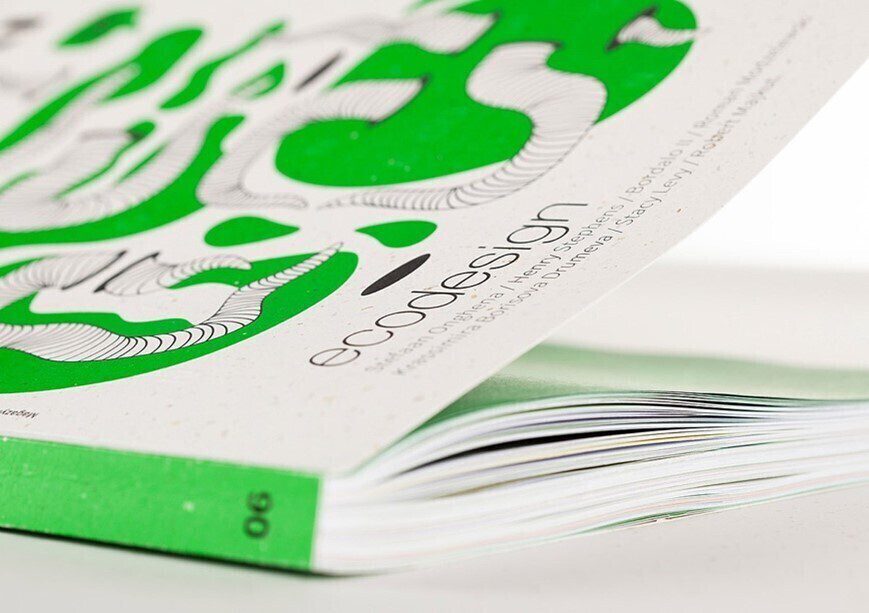How adopting sustainable design strengthens your competitiveness ?
Working on the footprint of your digital pathways allows you to reduce the number of breakpoints, improve your SEO, increase the average shopping cart … but also to serve the CSR commitments favored by users. These are just a few examples of the benefits that a sustainable digital approach to designing your digital services can bring you. If you are an e-commerce or digital manager, here are 5 good reasons to make sustainable web design your keyword this year!
45% increase in the GHG footprint of digital technologies by 2030, with impacts that could triple by 2050 if we do not adopt an accelerated ecodesign approach: this is the conclusion of the ADEME and Arcep report of March 2023.) In the same vein, the IPCC report published in March 2023 emphasizes the importance of questioning our use of digital technologies. For Nadia Maïzi, co-author of the report, “Behind the digital, there is a materiality that we didn’t realize recently, but an awareness is now palpable.”
While everyone tends to agree that digital technology brings a number of positive externalities (logistical gains, optimization, agility, unparalleled innovation and communication opportunities, etc.), there are nevertheless negative impacts that need to be taken into account today.
Today’s digital technology pollutes, generates inequalities, and its emissions are increasing tenfold at a speed that exceeds all other sectors, and this is unfortunately not visible. It is not always obvious or clear how to reduce the CO2 emissions of its IS or its energy consumption. Very often, organizations stick to a siloed assessment, driven by legal obligations and without any real will to improve.
Digital Responsibility is definitely a virtuous circle, and ecodesign is the most effective lever of action! Perceiving all the business advantages of sustainable design can be complex. However, the ravages of a poorly designed product carried by a greenwashing approach are easily observable. In addition to being beneficial for the planet, ecodesign is synonymous with sustainability, synergies and value creation. If some people describe ecodesign as a real industrial revolution in the same way as digital technology is, it is because it transforms the way we look at things. It is above all a process of observation, research, analysis and creation.

Definition: Ecodesign
Ecodesign, also known as sustainable design, involves considering the environmental impact of our activity when designing our products and services. It involves taking into account accessibility and inclusion criteria, in addition to environmental factors, in order to promote sustainable and sustainable development.
“80% of the environmental impact of a product is determined at the design stage”.
There is a growing link between cybersecurity, adaptation, environment, sustainability and digital. At the convergence of the three are the principles of sustainable design.
Here are the main criteria for negative digital impact:
- Raw material consumption (abiotic resources)
- Energy consumption
- Discharge into the natural environment and other pollution
- Climate impacts
- Impacts on biodiversity
- Social impacts
It is imperative to take a strategic and systemic approach to ecodesign, which is not limited to products or materials, but also extends to business models. This approach aims to understand and limit the impacts of the company beyond its perimeter, notably on society and the planet. We can cite the circular design approaches theorized by IDEO (precursor of design thinking) or Circulab.
Ecodesign consists of integrating environmental considerations from the first stages of the design of a product or service, in order to ensure the best environmental performance throughout its life cycle. In other words, it is a process that aims to optimize the ecological footprint of a product right from its conception. Often, the objective is to improve its recyclability, upcycling possibilities or biodegradability at the end of its life cycle. It can also involve using biobased, recycled or second-hand products or materials that focus on the sourcing and impact of the manufacturing process.
For the ecodesign process to be complete, it is therefore necessary to ensure that the use of resources is optimized throughout the value chain, and that the positive impacts are multiplied at each stage. This is how we move from the ecodesign of a product, which focuses on materials, shapes and uses, to the ecodesign of the business model. The latter takes into account the means of collaboration with stakeholders in order to sell, produce and use the product, but also to collect and recycle it.
Here are six benefits of ecodesign that will show you that sustainable design is not just a trend, but a real necessity for transformation and a real asset for your marketing, sales and communication performance!
How ecodesign can improve your digital strategy: 6 key benefits
1. It improves performance and transformation
Contrary to popular belief, ecodesign is not a brake on creativity but on ease!
Forcing yourself to go to the essential by applying the 3U rule (Useful, Usable and Used) is to ensure that you remove all the ‘fat’ that you are tempted to add for fear of forgetting a message.
Knowing that according to a Google study, the impacts of loading speed on the behavior of Internet users are quite telling, especially on an audience now mostly on mobile :
- The average time to load a mobile page is 19 seconds with a 3G connection (sample of 10,000 mobile sites via wepagetest.org)
- 77% of mobile sites take longer than 10 seconds to load
- According to Google Analytics, 53% of Internet users leave the page if it takes more than 3 seconds to load!
- A site with a loading time of 5s vs 19s allows for example:
- A 35% drop in the rebound rate
- A 60% increase in the number of page views per visitor
- And + 70% of the visit duration
There is a simple reason for these results, the constant increase in page weight.
+400% in just over 10 years according to http archive. We could add to this the number of features, requests, video streams etc. Carried by the increase of the network capacities (4G then 5G…) with the advent of the all connected and the telework, the period of abundance seems to be effectively closed.
It is therefore obvious that designing with more sobriety will improve the overall performance of your site, especially if it has a lot of traffic. And the mechanism is virtuous: the more your page will be ecodesigned, the more it will perform, both in terms of transformation and impact.
Some simple questions: Do you need that carousel that no one clicks on? That chatbot that was fashionable to have but doesn’t satisfy your users? A video in autoplay whose contents are not accessible… the list is long and very well listed in ecodesign guidelines like the RGESN or through an analysis tool like fruggr.
2. It increases customer satisfaction
According to a 2020 benchmark from Content Square, the online customer journey still feels like an obstacle course.
As we can see, we are still far from the golden age of accessibility and universality that the inventor of the web, Tim Berners Lee, dreamed of…
It is often admitted that the lasting success of a company is based on the quality of its customer relationship. By improving your understanding of the user, his needs, his constraints and the experience he seeks through your products and services, you will have the keys to improve your relationship with him. An ecodesign approach allows you to simplify and personalize the user experience. In a context where every market share gained is crucial, having optimized paths in terms of weight, functional frugality and accessibility is crucial to avoid a high bounce rate.
3. It increases the size of your market
Good news! According to Content Square, it is possible to reach a larger market than China if you take into account disability or digital divide situations in the design of your digital services. If digital already excludes more than 17% of the French population and accessibility is a source of lost traffic, loyalty and conversion, then the reverse could increase the size of your market. Not to mention the communication benefits of optimizing an ecodesigned service.
Accessibility is a major issue in ecodesign, a practice that, let’s not forget, became a legal obligation several years ago for government departments and companies with a turnover of over 250 million euros in France.
Attention point: it is important, in the interest of inclusion, to be vigilant about the use of inclusive writing. Indeed, the first mission of your digital platforms is to be understandable by all. Some uses, such as the midpoint, can be a real barrier to digital inclusion, especially for dyslexics and users of audio players.
Applied to digital, sustainable design is a way to take care of others and our environment. In permaculture, we talk about the importance of taking care of our relationship with others and ecosystems in order to redistribute value: we find the same principles in CSR and digital trends this year according to the KPMG France Innovation Lab survey. In design, this is called Care Design or Design for all. The goal is to destigmatize and meet the needs of all.
By designing services that work on a wide range of devices, including low-speed Internet connections, we can reach a wider audience. A frugal design can also allow your service to run on smartphones with 3G connections, for example.
4. It reduces your costs and increase your profits
It can’t be said enough: quality is much more important than quantity! However, it still happens too often that quality is reduced for cost optimization, which is one of the key issues in the IT sector. Ecodesign adds another dimension to this cost reduction. By taking into account everything that contributes to generate losses and negative externalities, it allows to create value in an often unsuspected way.
By optimizing, ecodesign makes it possible to meet several needs at the same time. Through an ergonomic and more intuitive response, it also allows you to better target your efforts. As a result, your company will benefit from a better perception of the quality of its products and services, which will translate into an improved brand experience for customers.
Some concrete examples of financial gain:
- An optimized site means lower cost hosting
- A good design (thanks to a design system, for example) means fewer specifications for development and fewer subsequent interventions on the design
- Less functionality means lower development and maintenance costs.
- Applied sobriety means a promise of longer service life and a longer payback period.
- An ecodesigned site is mechanically a more efficient site in terms of coverage, reduction of the bounce rate, increase of the audience…which will result in an increase of your turnover!
5. It helps you to communicate better and to embody CSR
Aligning words with actions: ecodesign is a way to act and to be able to communicate on concrete, measurable actionsthat have an impact. Inclusion, data protection, ethics and digital sobriety are strong values, demanded and plebiscited by employees and prospects alike. With today’s analytics solutions like fruggr, it’s easy to get an accurate report of your environmental and social footprint, as well as the gains you’ve made in improving it.
Your digital services are the showcase of your activities and the digital representation of your brand image. Digital technology is now omnipresent in our daily lives, and CSR can no longer leave it on the sidelines of its mission. As both an image and a message vector, your digital tools can help you communicate your CSR commitments. But Sustainable Digital goes further.
By including social, societal and environmental aspects in the very design of your digital services (and, if we go further, in your organization’s digital strategy) you have new projects and indicators to communicate on. Integrating the sustainability pillars – People, Planet, Prosperity – into your digital strategy means being ahead of the curve and more responsive to sustainability goals.
These extra-financial performance indicators (ESG) are tomorrow’s mandatory indicators that will be analyzed for company ratings, a guarantee of sustainable economic health (CSRD law)
“There is no company that wins in a world that loses“.
6. It gives you an opportunity to act for the planet and for society
The most fundamental benefit ultimately lies in the adoption of a tangible and concrete action, thus going beyond the simple framework of the service to reach the wider scale of the organization, society and the environment. Because ecodesign is above all about asking the question of impacts in a systemic way. Is my service really necessary? What rebound or impact effects does it have? Have I thought about its life cycle? Do I really have to do it again? How can I maintain it, simplify it, improve it…? By questioning the relevance of your service, you find ways to optimize it and minimize its environmental footprint while ensuring its economic viability.
Therefore, ecodesign is an essential lever to reconcile economic efficiency, respect for the environment and contribution to society.
Choosing digital sobriety means adopting a sustainable strategy for your company and your environment in an inclusive and sustainable way. To face the challenges of the energy transition and anticipate possible tightening of regulations, it is essential to develop a Sustainable Digital strategy. Finally, let’s remember that ecodesign and sobriety are the only means recommended by ADEME and Arcep to achieve the objectives of decarbonization of the digital sector by 2030.

